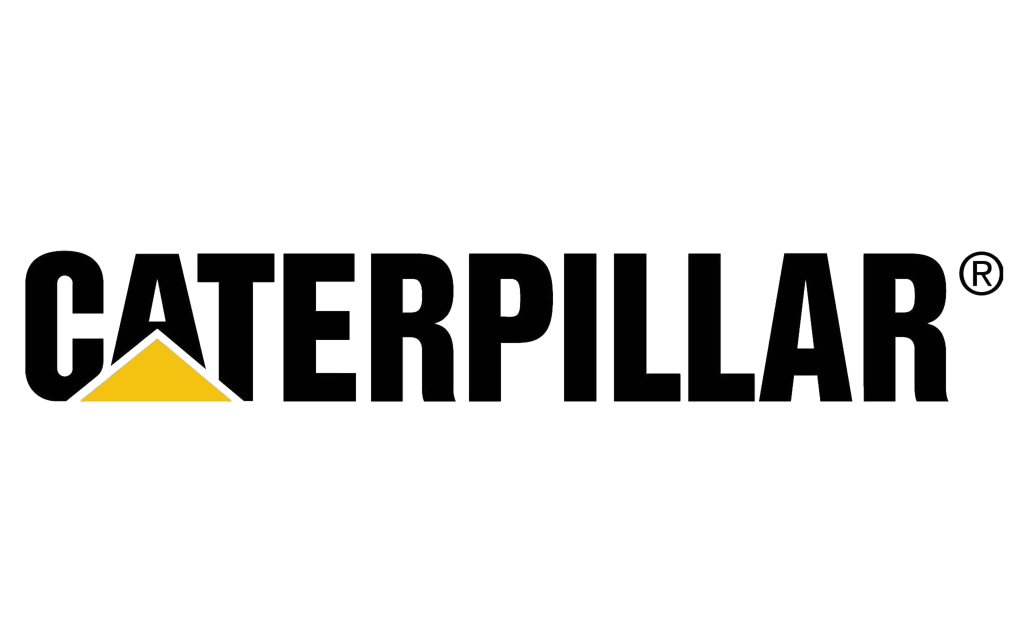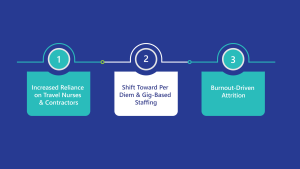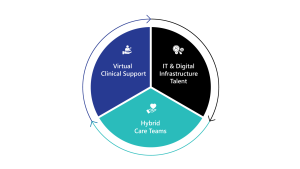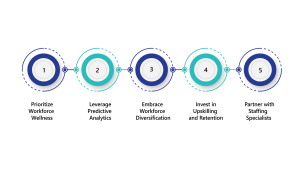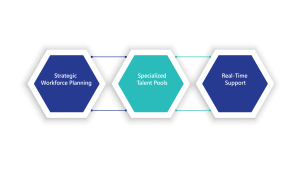The healthcare staffing industry is undergoing a seismic shift. As the dust settles from the global pandemic, healthcare providers are facing new pressures to evolve, adapt, and innovate. What once worked—traditional hiring models, localized staffing, and predictable scheduling—has been disrupted by burnout, technology, and shifting patient needs.
In this guide, we explore how the pandemic transformed the healthcare staffing industry trends 2025 and what the future holds. We’ll break down the emerging trends, discuss telehealth’s lasting impact, and share actionable strategies for building a resilient and future-ready workforce with healthcare workforce solutions that actually work.

Introduction: The Evolving Landscape of Healthcare Staffing in 2025
Healthcare staffing, once a behind-the-scenes operation, is now at the forefront of operational strategy. Hospitals, clinics, and home care providers are no longer just seeking qualified professionals—they’re seeking adaptable, technology-savvy, and emotionally resilient talent.
Post-2020, healthcare staffing challenges aren’t just about headcount. They’re about retention, cultural fit, and real-time responsiveness. The integration of digital health services, increasing demand for flexibility, and a greater emphasis on mental health have made staffing both a challenge and a strategic advantage. This calls for a shift toward medical staffing solutions that align with evolving patient expectations and system requirements.
Impact of the Pandemic on Healthcare Staffing Models
The COVID-19 pandemic exposed the fragility of traditional healthcare staffing models. Staff shortages, high turnover, and unprecedented spikes in demand revealed the need for flexible, scalable, and data-driven staffing approaches.
Key changes include:
- Increased Reliance on Travel Nurses & Contractors: Temporary professionals filled urgent gaps, and many organizations continue to rely on them for surge support.
- Shift Toward Per Diem & Gig-Based Staffing: Platforms offering on-demand shifts gained traction, empowering clinicians to choose when and where they work.
- Burnout-Driven Attrition: Prolonged crisis response led to record-breaking burnout, prompting many professionals to leave the field or transition to less demanding roles.
Organizations that didn’t pivot quickly suffered from lower patient satisfaction, delayed services, and increased operational costs —an ongoing concern in hospital healthcare hiring challenges 2025.
Embracing Telehealth Staffing and Remote Work in Healthcare
Telehealth staffing was once considered a convenience—today, it’s a core delivery method for many providers. This shift has fundamentally altered the types of roles healthcare systems need to fill.
The new staffing paradigm:
- Virtual Clinical Support: Roles such as tele-triage nurses, remote care coordinators, and virtual medical assistants are in high demand.
- IT & Digital Infrastructure Talent: Supporting a secure, HIPAA-compliant telehealth system requires ongoing healthcare staffing technology and tech-based talent acquisition.
- Hybrid Care Teams: Some staff now divide their time between in-person and remote roles, requiring new management protocols and performance KPIs.
Additionally, non-clinical staff—HR, billing, administrative teams—are increasingly working remotely. This decentralization demands a new approach to communication, cybersecurity, and culture building within healthcare workforce solutions.
Key Strategies for Building a Resilient Healthcare Workforce
To navigate the future of healthcare staffing, organizations must invest in systems and cultures that support resilience, agility, and long-term sustainability.
- Prioritize Workforce Wellness
- Embed mental health resources and resilience training into onboarding.
- Offer flexible scheduling to accommodate personal and family needs.
- Recognize and reward frontline efforts to boost morale.
- Leverage Predictive Analytics
- Use AI-driven forecasting to anticipate demand surges and prevent staffing gaps.
- Analyze turnover data to identify cultural or workload-related red flags early.
- Embrace Workforce Diversification
- Integrate part-time, freelance, and virtual roles into core staffing models.
- Develop talent pipelines with local universities, vocational programs, and international recruitment partners.
- Invest in Upskilling and Retention
- Offer ongoing training, cross-functional opportunities, and certifications.
- Create leadership development tracks for high-potential employees.
- Partner with Staffing Specialists
- Collaborate with firms like Integrated HCP that understand the nuances of post-pandemic staffing. Their tailored medical staffing solutions meet today’s demand while aligning with healthcare staffing trends of tomorrow.
- Benefit from built-in compliance protocols, candidate vetting, and industry-specific healthcare staffing technology stacks.
Conclusion: Preparing for the Future of Healthcare Staffing
The future of healthcare staffing isn’t static—it’s dynamic, tech-enabled, and people-centric. Organizations that adapt will gain a strategic edge, while those clinging to outdated models may struggle to attract and retain talent.
In this guide, we’ve examined how the pandemic reshaped staffing and why forward-thinking approaches—like hybrid staffing, wellness-first policies, and strategic partnerships—are key to long-term success. These approaches are particularly crucial as we enter a new chapter defined by healthcare staffing industry trends 2025.
Integrated HCP: A Smarter Approach to Healthcare Talent
Integrated HCP supports healthcare systems in navigating staffing complexity with a blend of innovation, empathy, and industry insight. Their tailored healthcare workforce solutions are designed to meet today’s challenges—while building for tomorrow.
Whether you’re scaling telehealth staffing, reopening facilities, or reducing healthcare staffing challenges, Integrated HCP offers:
- Strategic Workforce Planning to match evolving care models.
- Specialized Talent Pools across clinical, non-clinical, and digital healthcare roles.
- Real-Time Support that scales with your needs and compliance standards.
Ready to future-proof your workforce? Explore Integrated HCP’s flexible medical staffing solutions at IHCP.
